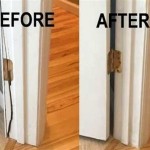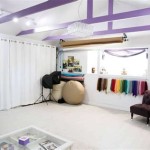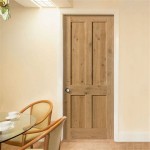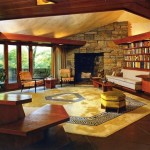What is the Best LRV for Interior Paint?
Light Reflectance Value (LRV) is a crucial metric in the realm of interior design and painting. It quantifies the amount of visible light a color reflects, ranging from 0% for absolute black to 100% for pure white. Understanding LRV is paramount when selecting interior paint colors, as it significantly influences the brightness, ambiance, and perceived size of a room. Choosing the "best" LRV, however, isn't a one-size-fits-all proposition. The optimal LRV depends heavily on a multitude of factors, including the room's function, the amount of natural light it receives, the desired aesthetic, and the existing décor.
This article will delve into the intricacies of LRV, exploring its importance and the key considerations that should guide your selection process. We will cover how different LRV ranges affect the overall feel of a room and offer practical advice on choosing the most suitable LRV for various interior spaces.
Understanding the LRV Scale
The LRV scale, as previously noted, extends from 0 to 100. Understanding this scale is the foundation for making informed decisions about paint color. A color with an LRV of 0 absorbs all light, rendering it the darkest possible shade. Conversely, a color with an LRV of 100 reflects all light, maximizing brightness. Most paint colors fall somewhere within this spectrum, exhibiting varying degrees of light reflectance. Mid-tone colors typically have LRV values around 50. It is important to note that LRV is not a direct representation of the color's intensity or saturation, but rather its ability to reflect light.
For example, a deep, saturated blue and a soft, pastel blue could have significantly different LRV values despite both being blue. The pastel blue, due to its inclusion of white pigment, will reflect more light and thus possess a higher LRV than the deeply saturated blue. Understanding these nuances is essential for predicting how a color will behave in a specific room.
Paint manufacturers often provide LRV values for their colors. This information can usually be found on the paint chip or on the manufacturer's website. Utilizing this data is critical in the planning stages of any interior painting project. Some manufacturers may use different scales or formulas to calculate LRV, so it's important to understand the methodology used by the specific brand you are considering. Furthermore, remember that the LRV value provided is based on a controlled environment and may vary slightly depending on the lighting in your home.
Factors Influencing LRV Selection
Choosing the appropriate LRV for interior paint requires careful consideration of several key factors: the room's function, the amount of natural light available, the existing décor, and the desired aesthetic. Each of these elements plays a significant role in determining the optimal LRV range.
Firstly, the function of the room should be a primary driver of LRV selection. In rooms designed for relaxation and tranquility, such as bedrooms or home theaters, lower LRV values (darker colors) can create a cozy and intimate atmosphere. Conversely, in rooms intended for activity and productivity, such as kitchens, home offices, or playrooms, higher LRV values (lighter colors) can promote alertness and energy. Spaces like dining rooms often fall in the middle, where moderate LRV values create an inviting and balanced atmosphere.
Secondly, the amount of natural light a room receives is a crucial determinant of LRV. Rooms with ample natural light can handle darker colors with lower LRV values without feeling claustrophobic or dim. However, rooms with limited natural light benefit significantly from lighter colors with higher LRV values, which amplify the available light and prevent the space from feeling dark and dreary. Using a light color with a high LRV in a dark room can make it feel larger and more inviting.
Thirdly, the existing décor, including furniture, flooring, and artwork, should be taken into account when selecting an LRV. The paint color should complement the existing elements of the room, creating a cohesive and harmonious design. If the furniture and flooring are dark, a lighter paint color with a higher LRV can provide a contrast and prevent the room from feeling overwhelming. Conversely, if the furniture and flooring are light, a darker paint color with a lower LRV can add depth and visual interest.
Finally, the desired aesthetic should be a guiding factor in LRV selection. The paint color should reflect the homeowner's personal style and preferences. Whether the goal is to create a modern, minimalist space or a cozy, traditional room, the LRV should align with the overall design vision. Experimentation with different LRV ranges and color palettes is encouraged to achieve the desired aesthetic; websites that offer virtual room painting tools can be helpful for visualizing different color combinations.
Applying LRV in Different Rooms
The principles of LRV selection can be applied to specific rooms within a home to achieve desired effects. The strategy for selecting an ideal LRV varies by space, and understanding the typical use and lighting conditions of each room can significantly improve the final aesthetic.
In living rooms, where comfort and sociability are paramount, an LRV in the mid-range (around 50-70) is often a safe and effective choice. This provides a balance between brightness and warmth. If the living room lacks natural light, opting for a lighter shade with a higher LRV within that range would be a better option. Accent walls can be used to introduce darker colors with lower LRV values, adding depth and dimension to the space.
Bedrooms, designed for relaxation and rest, often benefit from lower LRV values (around 30-50). These darker, more subdued colors create a sense of tranquility and promote sleep. However, if the bedroom is small or lacks natural light, a lighter shade with a higher LRV might be necessary to prevent the space from feeling cramped and dark. The use of soft, muted tones can further enhance the relaxing atmosphere.
Kitchens, typically hubs of activity and productivity, generally benefit from higher LRV values (around 60-80). These lighter colors enhance visibility and create a sense of cleanliness and airiness. In kitchens with limited natural light, it is particularly important to choose a paint color with a high LRV to maximize brightness and prevent the space from feeling gloomy. Consider the color of the cabinets and countertops when choosing your kitchen paint color; a high-LRV paint color can complement darker cabinetry.
Bathrooms, often small and enclosed spaces, also benefit from higher LRV values (around 70-90). Lighter colors make the bathroom feel larger and brighter, which is particularly important in windowless or poorly lit bathrooms. Reflective surfaces, such as mirrors and glossy tiles, can further enhance the light-reflecting properties of the paint. However, darker colors can be used in larger bathrooms to create a more dramatic and luxurious feel, but artificial light should be considered carefully in these cases.
Hallways and entryways, often narrow and lacking in natural light, should also prioritize higher LRV values (around 70-90). Lighter colors can make these spaces feel more open and inviting, and they can also help to connect different rooms within the home. Avoid excessively dark colors in hallways, as they can create a claustrophobic and unwelcoming atmosphere. Consider using semi-gloss or gloss paint finishes in hallways, as they are more durable and easier to clean.
In conclusion, the selection of the "best" LRV for interior paint is a multifaceted process that requires careful consideration of various factors. Understanding the LRV scale, analyzing the room's function and lighting conditions, and aligning the paint color with the existing décor and desired aesthetic are all essential steps in achieving a harmonious and visually appealing interior space. By thoughtfully applying these principles, homeowners can transform their living spaces into environments that are both functional and aesthetically pleasing.

Lrv The Best Guide For Paint Colors And More

The Best Paint Numbers For Your Home 60 70 Lrv Kylie M Interiors

Understanding Light Reflective Value Lrv In Paint

The Best Paint Numbers For Your Home 60 70 Lrv Kylie M Interiors

Paint Colors Lrv The Ultimate Guide You Need To Read Kylie M Interiors

Paint Colors Lrv The Ultimate Guide You Need To Read Kylie M Interiors

The 10 Best Warm Neutral Paint Colors For Your Entire Home Kylie M Interiors

Light Reflectance Value What It Means For Your Colour Choices Priority One Coatings

Lrv Paint Colours You Light Reflectance Value Tips Insights Kylie M Interiors
Paint Colors Lrv The Ultimate Guide You Need To Read Kylie M Interiors
Related Posts








